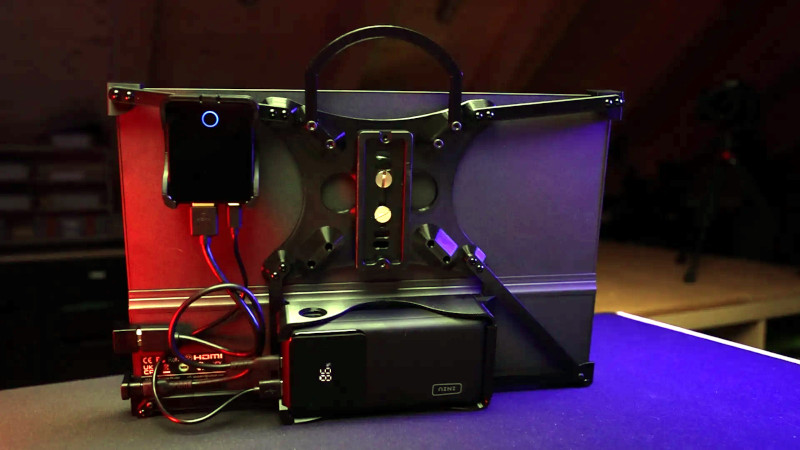The quality of available video production equipment has increased hugely as digital video and then high-definition equipment have entered the market. But there are still some components which are expensive, one of which is a decent quality HD wireless monitor. Along comes [FuzzyLogic] with a solution, in the form of an external monitor for a laptop, driven by a wireless HDMI extender.
In one sense this project involves plugging in a series of components and simply using them for their intended purpose, however it’s more than that in that it involves some rather useful 3D printed parts to make a truly portable wireless monitor, as well as saving the rest of us the gamble of buying wireless HDMI extender without knowing whether it would deliver.
He initially tried an HDMI-to-USB dongle and a streaming Raspberry Pi, however the latency was far too high to be useful. The extender does have a small delay, but not so bad as to be unusable. The whole including the monitor can be powered from a large USB power bank, answering one of our questions. All the files can be downloaded from Printables should you wish to follow the same path, and meanwhile there’s a video with the details below the break.
















Videos are useless. Spend the time once instead and write it up once. Instead of forcing hundreds of users to waste time looking at a video.
If you follow the first link in the article, you’ll find the write up on their gitlab project.
> Videos are useless. Spend the time once instead and write it up once. Instead of forcing hundreds of users to waste time looking at a video.
+1. Actually, I can’t +1 this strongly enough.
There is a link in the article with my writeup on Gitlab and all 3d sources are available there as well. I thought this would be enough to replicate this project. What is missing for you here and where can I improve? I would love some feedback.
I liked this solution until I noted the chosen video transmitter works at 2.4/5Ghz. Those bands are already pretty busy with my usual Wi-fi traffic.
Better solution: Old laptop (or 2 in 1) from eBay, and VNC/Remote Desktop. Old Lenovo IdeaCenter even has HDMI input you can plug your extender into if you must.
That’s also a good idea but I doubt you could get that kind of battery life out of an old laptop.
Wouldn’t this introduce delay just like his second solution?